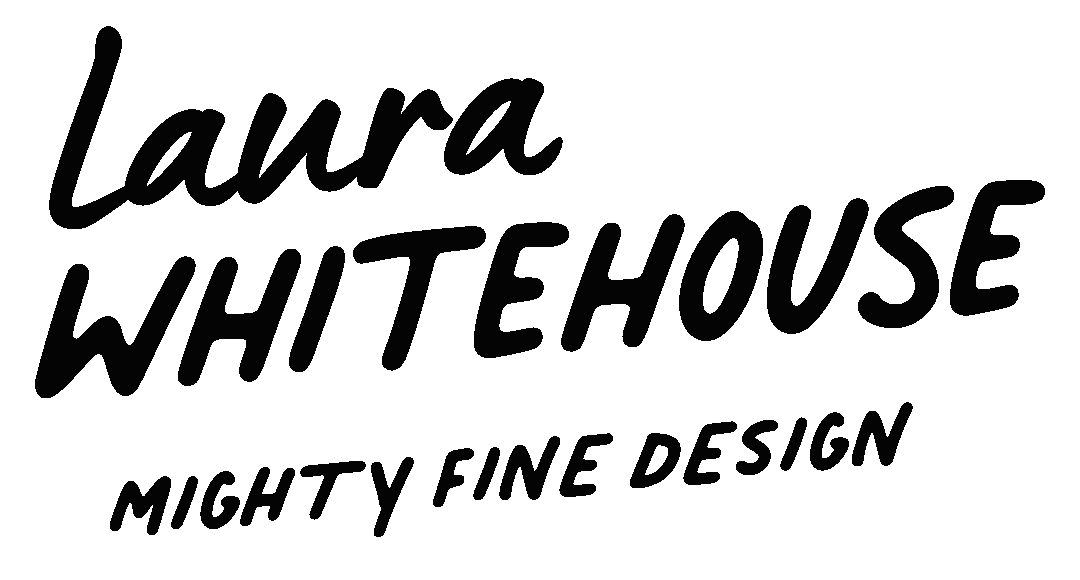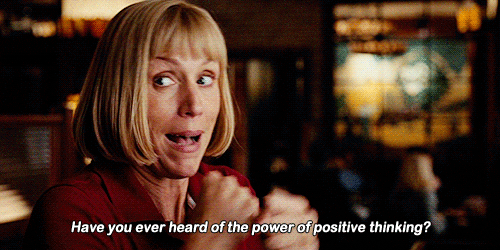Graphic Design for Film requires patience, persistence, and positivity
Like anyone who has ever dipped their toe in the shallow waters of a new career, hoping they might cross the riverbed of ‘confidently knowing stuff’ to the green banks of ‘consistent adult employment’, only to find that their toe has been ripped clean off by what was in fact a raging, not-at-all shallow and in fact quite aggressive, piranha-infested river — there’s something about underestimating the difficulty of something and having your toe bit off that makes you question how you got to be so confident on the topic of crossing riverbeds.
If that very relatable metaphor didn’t make a lick of sense to you, basically what I’m saying is it’s good to have an approach in mind before jumping into something. In real life, for example, I know not to cross strange riverbeds, regardless of their perceived depth, thanks to the teachings of the great TLC as laid out in their pedagogic tome “Waterfalls.”
To that end, I wanted to continue sharing some hard and fast rules I’ve been mapping out in the realm of Graphic Design for Film — a series of universal tips for conducting yourself when trying to get a graphics job in the film industry. In combination with my previous tips on getting your start in the industry, these rules — which I dub the three P’s — constitute my best bridge-building efforts towards sparing your toe from getting bit off by hungry production design-errr-piranhas. Piranhas. I only wrote piranhas. The road into Graphic Design for Film can be a long one, and without embodying the three P’s, it can feel even longer. These P’s can effectively become your route into the industry by way of managing your expectations, impressing upon others your genuine desire to do the job, and keeping your list of enemies manageably low. Trust me, life is a lot easier when you’re not on Tom Hardy’s hitlist…
Patience
In my last post, I talked a little about the benefits of stalking people on IMDB for jobs, and hinted that, while it is easy to get a hold of the email addresses of established graphic and production designers, and indeed surprisingly reasonable to pester them for work and experience, it is also vitally important to be patient with people.
People are tremendously busy. During the sometimes stunningly long work day (8am - 7pm days, if not longer, plus the odd weekend), when the art director and the production designer are batting ideas off one another left and right, leaving the ever humble and ever busy graphic designer to interpret how best to render their imaginings into printable reality, any email that gets received that isn’t marked as urgent (especially on Christmas Day - trust me, it’s happened) will be largely ignored, and any email that is marked urgent but actually isn’t, like a very ambitious graphic designer’s boldest introduction ever, it will be quickly, yet firmly, deleted. Or at least that’s what I’ve been told. And definitely not something I ever do.
When things ease up or the chaos of the current job ends, film folk will often start trawling through their emails and giving everything they ignored before a second chance. If they’re quite nice, and many will be (so play the odds and reach out to lots of people, hint hint), they’ll reply and either figure out some way to help you out, or at least offer some advice on what didn’t work with your first approach.
Patience is further reaching than just waiting for people to get back to your emails, however; it’s a virtue you’re going to want to embody, inside and out — being patient is especially important when it comes to getting paid, for example. If you’re just joining the film industry and lacking in a fairly robust CV, a stunning portfolio won’t do much but start a conversation. People will want to know you can do the job, and the best way to do that is to get experience. Experience that, 99% of the time, will not pay. Plus, 99% of the time, you’ll need to do this a good one-to-three times (availability of jobs and luck pending).
It’s very very reasonable to be exhausted or frustrated about having to work long hours for a few weeks at a time for little or no pay. However, these are only tips on how to get in based on the way things are — when the revolution comes and budding graphic designers stand united in the face of mild-to-severe unpaid labour exploitation, we will stand together, artpersons all. In the meantime, however, unless you’re very lucky, or very connected, expect to feed yourself on passion on the first few outings. (I’m joking, they usually feed you for free labour at the least. Please don’t starve.)
To that end, maybe best not stake everything in one dramatic move right after you finish your first film job experience — be patient and take these things in moderation. Keep employed, even somewhere super unrelated, and take on experiences only when you can afford to. Eventually, your efforts will build up, and you can stop crying in the stockroom like I once did, commit some light-to-medium property damage on your way out the door, and step cleanly into the light of fairly lucrative backbreaking work with an arty twist. Nice.
Persistence
Much like working as a salesperson, a TV license house caller, or a grotesque troll living under a bridge, working in film requires a significant tolerance for pestering others — though thankfully you won’t be as ridiculed and as loathed as that disgusting, insidious, goat-gobbling TV license house caller (p.s there are no magic TV licensing detecting vans - it was all a PR campaign).
Even when you do crack the industry and start earning enough money to pay rent you’ll still have to bug people about what the next job is, who’s going where and when, and for how long, just so you can start to begin to figure out who you’re going to have to actually pester to get the job. It’s a polite pestering, of course — everybody’s in the same boat, working job to job, so it’s not like your colleagues don’t know why you ask when you off-the-cuff ask about their plans in 6-7 weeks’ time, reshoots pending.
At the outset especially, you’ll need to be quite persistent to work in Graphic Design for Film. That’s not to say you need to be pushy, or rude, or senseless — remember, film folk are extremely busy and your existence will come as something of an imposition to them, so best not rock the boat by sending them emails every single day asking whether they’ve decided on their next graphic designer. Three days into that barrage and they’ll at least know who it won’t be.
When approaching someone about work, my rule of thumb is to email no more than three times, with at least two weeks in between. Usually, they’ll get back to you after that third email — though, as mentioned above, not necessarily anytime within the ballpark of when you send the email, so be patient.
However, that persistence is important. Don’t allow yourself to not be seen because you’re afraid of irritating people — be forward, but also reasonable, and draw limits for yourself on how much contact is too much contact. In the meantime, be persistent in all other possible manners: keep working, keep building your portfolio, and keep attending workshops like I did with Annie Atkins. All of these efforts will add up.
Positivity
Really, this letter could have been a number of different P’s. Politeness is a strong one, I feel like I’ve mentioned that in the above quite a number of times. Purpose could also work, it’s pointless going to this much effort if you don’t feel a strong desire to do the work. Pointless is also pretty good too, you might need the dulcet tones of Richard Osmond to stay focused at your lowest point.
But if there was one factor that could guide all of the above, I would say it’s Positivity. It can be tremendously hard sometimes, and unbearably schmatzy to write I promise you, but positivity can make the biggest impact on all of the above, and without it, they might as well be known as ‘the two P’s that never landed anybody a job’.
Be kind to those you meet and remain positive even in the face of a rough interview or a bad first meeting. Be kind to those you haven’t met, and don’t presume the worst about them off the back of a badly worded or rushed email. Be positive inside and out — even if on the inside you’re burned out. Any trauma is an expense to be dealt with by future, richer graphic designer you. Hopefully.
Obviously, if it just feels like this stuff is killing you, maybe it’s not worth it — but if you can manage this rule and stay above the ‘dead inside’ line we all have within us, then hold tight to that and it’ll carry the rest of the advice above all on its own.
And that’s the three P’s — a handy three-point list that will guide you into Graphic Design for Film like a bridge over piranha-infested waters. Yes, I am still calling back to that terrible metaphor from the start of this article, it’s very hard to write metaphors; I promise not to do one again, and I’m sorry. I am officially putting my metaphor-writing hat back in its box of complicated English-writing mechanisms and — oh dear, what a figurative mess, I’m so sorry.





